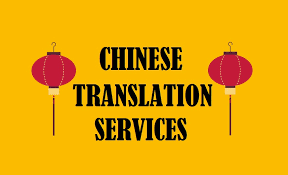Chinese is considered one of the most difficult and complex languages to master because it is a collection of various languages or dialects that differ significantly from one another.
The writing system and grammar of Chinese are completely different from English, and there are many aspects to consider when translating from English or any other language into Chinese.
Translating into Chinese is complicated and proper Chinese writing grammar and rules must be followed. Here are some important tips to pay attention to when translating English into Chinese.
Language origin and culture
More than a billion people speak Chinese, making it the most widely spoken language in the world. It is written using characters called hieroglyphs. There are about 50,000 characters in a standard Chinese dictionary. Most Chinese characters consist of two elements: 1) the meaning of a word and 2) the pronunciation of a character. Depending on the region, Chinese has two writing systems and spoken forms.
Simplified Chinese or traditional Chinese?
When asking for a Chinese translation, many people are confused by these two terms as well as Mandarin and Cantonese. It is important to be clear about these differences, as they relate to the locale in which you are planning.
In short, simplified Chinese is the standard written form of Chinese and is most commonly used in mainland China and Singapore, while Mandarin is the spoken form and is used in China, Singapore and Taiwan. Traditional Chinese is the written form of Chinese used in Hong Kong, Macau, Taiwan and Malaysia, and the oral form is Cantonese (except Taiwan).

The cultural differences
In Chinese, people have different ways of describing people’s names, addresses, dates, etc. If the translator is not aware of these differences, misunderstandings can occur. For example, when describing addresses, unlike in English, they start with office numbers, building names, street numbers, city, province and country names, whereas in Chinese it is the opposite. That is, country name > province name > city name > street name > office number. The same is true of date descriptions.
Conclusion
In conclusion, there are many different aspects to consider when you are looking for english-Chinese services. The examples above are just a few basic hints. It is recommended that you work with organizations that have language professionals who understand the translated language. Must be a native speaker and have extensive Chinese translation experience to ensure that you get the final translation of excellent quality.



